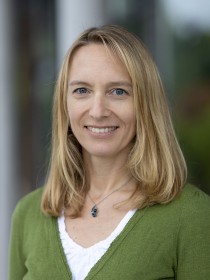Ultranet
BBPlG Project No. 2 | Osterath – Philippsburg
Ultranet – that’s the name of the new DC link between North Rhine-Westphalia and Baden-Württemberg. This 340-kilometre-long line can transmit some 2,000 megawatts of electricity. We at Amprion are planning and will build Ultranet in cooperation with our partner TransnetBW. And we are putting our trust in what is an innovative technology: the first time, we will be transmitting direct and alternating current – both with a voltage of 380 kilovolts – over the same pylons. By using existing routes to do so, we are increasing the capacity of our network in an efficient and also resource-friendly way.
Dialogue
From the word go, we have accompanied the Ultranet project with open and transparent project communication. With events and discussions with municipalities, associations and local residents, but also through this website and newsletters, we keep everyone involved up to speed with the individual phases of the project.
Requirements and Necessity
Ultranet forms the southern section of Corridor A and is legally defined in the Federal Requirement Plan Act (BBPIG) as Project No. 2. The project has a special status at the EU level and has been defined as "project of common interest" or PCI. In order to transmit electricity from the generation centres in the north to the consumption centres in the west and south of the country, we need a further DC link in addition to the Ultranet link from Philippsburg to Osterath – one that runs from the Lower Rhine (Niederrhein) to East Frisia (Ostfriesland). This is known as the “A North” link, which is listed in the Federal Requirement Plan as Project No. 1.
Together, Ultranet and A North for Corridor A.
Like a bypass, the DC link will, above all, channel wind energy from the north past the grid in the Rhineland (which is already operating at full capacity) and down to the south. The electricity from the generating regions in the north is urgently needed here in the south, because the nuclear power plants currently still in service in southern Germany are to be decommissioned in 2022. If the weather is unfavourable and there is not enough wind in the north, power plants in North Rhine-Westphalia can step in. However, the corridor along the Rhine – i.e. the AC lines between North Rhine-Westphalia and Baden-Württemberg sometimes called the “Rheinschiene” – is already operating at full capacity.
Multi-Terminal DC Line to Emden
This technology enables us to connect up the Ultranet and A North DC links in the Rhineland. It turns what would otherwise be a purely point-to-point connection into a high-voltage direct-current (HVDC) transmission system with three grid connection points – in Baden-Württemberg in the south, North Rhine-Westphalia in the west and Lower Saxony in the north. Experts call this a “multi-terminal” network. It is extremely flexible and powerful, allowing us to transmit wind power from the north to the south, solar power from the south to the west and conventionally generated power from the west to the south.
Route
The 340-kilometre DC link between Osterath and Philippsburg comprises a total of five sections, each of which is subject to a two-stage approval procedure. Amprion is responsible for four Ultranet sections, while the southernmost section in Baden-Württemberg is the responsibility of TransnetBW. Federal sectoral planning is underway for all sections.
TECHNOLOGY: RETROFITTING OF EXISTING PYLONS
Ultranet looks like any other extra-high-voltage power line. Nevertheless, it is something completely new: for the first time ever, AC and DC power will be transmitted together over the same pylons. We have investigated this possibility intensively and have come to the conclusion that such operation is technically safe. With the exception of a few kilometres, Ultranet can be installed on the pylons of existing power lines. In a number of sections, all that needs to be retrofitted are the insulators that carry the conductors.

Along long stretches of the route, only the insulators that carry the conductors need to be replaced.
On 8 February 2017, the technology underpinning this new power line was the topic of an event entitled the “Hybrid Line Technology Dialogue” organised by the Federal Network Agency and held in Frankfurt.
And its thanks to this technology that no new construction work is required for the Ultranet project – neither underground nor above. This is also the reason why the project has been excluded from the prioritisation given to underground cables: a DC underground cable cannot replace the existing AC line and would have to be operated in parallel with the overhead line. An additional cable trench would be required. In view of the considerable spatial requirements and the degree of intervention in nature and the landscape such construction measures would entail, underground cabling is not an option for Ultranet.
